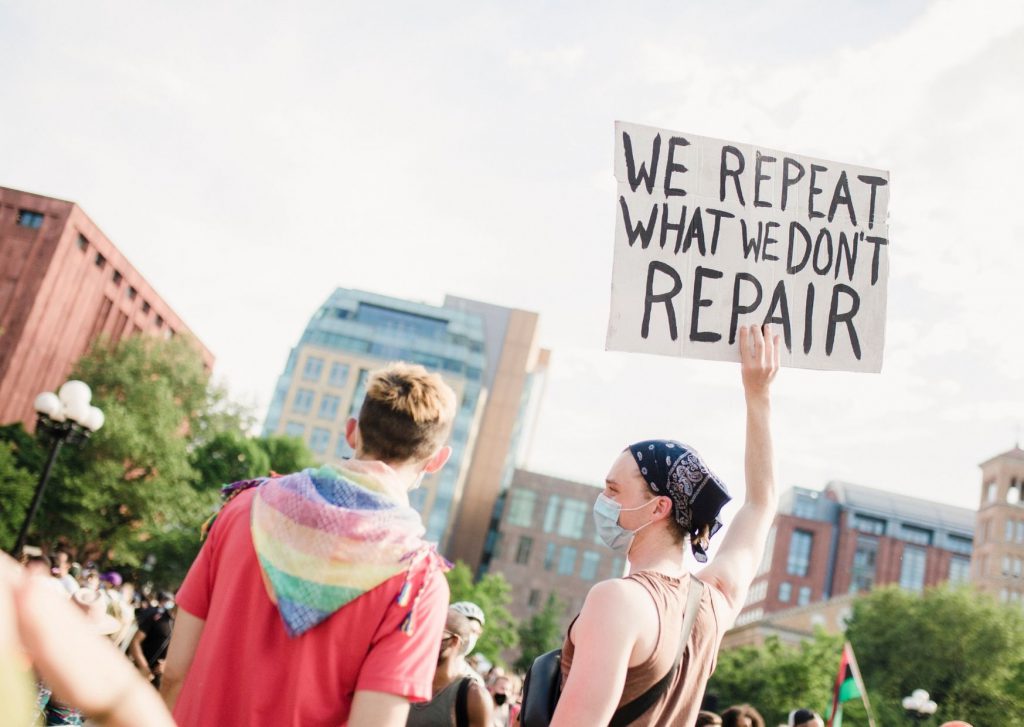Racism
Racism takes many forms and can occur in all kinds of places, such as schools, the workplace, in the streets, and also on the football field. In the past, people believed that there were different ‘races’ of people. Racism is based on the belief that people can be divided into groups based on characteristics, whereby a light or lighter skin colour is believed to be better than others. Racism has been around for a long time, some countries even had racist laws, which meant you could be restricted from living in certain areas, going to certain schools or parks based on your skin colour. Now, racial discrimination and racial hatred are punishable by law, as we have learned that there is no scientific evidence for human races. However, since racism has been around for so long, it is a structural problem that is also still apparent in institutions, laws and many other areas of life that needs to be tackled to make sure people are not treated differently based on their appearance.

ARE RACISM AND DISCRIMINATION THE SAME?
Racism is a common form of discrimination, whereby someone is judged or treated differently based on their skin colour, culture, religion, or what country they come from and not on the basis of who they are. There are also other forms of discrimination. Sometimes people are treated unjustly, differently or are judged because of their gender, who they fall in love with, if they have a disability, their age, or how much money they had growing up.
Discrimination is an unfair or unequal treatment of an individual or group, based on certain characteristics. Such characteristics include, but are not limited to, race, age, gender, sexual orientation, religion, disability. Discrimination of any kind should be prohibited; however, it is still happening, and some people might be unaware of the fact that their behaviour is discriminatory. People can be unaware of their racial biases or unaware of the hurtful effects. Racism is not limited to certain countries, it occurs worldwide in, for example, education, employment, criminal justice, access to services, and in sport.
WE AREN’T BORN WITH RACIST IDEAS, IT IS SOMETHING THAT IS LEARNED
Starting when we are young, we have a sense of belonging. Belonging to a family, a club, a culture or country even. It is also human nature to feel good about ourselves and safe in the group that we feel we belong too. If your group seems better than another group, we feel better. This idea called the ‘social identity theory’ is about “us” versus “them”. Often, the belief that one group is better than the other, is embedded into norms, values, attitudes and decision-making. For instance, some kids might not want to play with other kids because they look different or speak a different language at home. Judging someone according to their group and not their personality happens more often than we might be aware of. This is called a prejudice. Therefore, we need to try and teach ourselves to base our opinion of people on who they are and not what they look like. We can learn a lot from all different people, and this is why diversity makes us stronger.
THE EFFECTS OF RACISM
It might not be easy for children and young adults to talk about racist or discriminatory abuse they have faced. The notion of discrimination itself might not be very clear, and a lot of people will talk about an “injustice” rather than racism. The banalization of certain sexist, racist or homophobic behaviours might even lead them to think that such situations are “normal”. However, experiencing racism or discrimination is likely to seriously impair the social and psycho-affective development of a child or young adult by affecting self-esteem and trust in others.
Possible in-class discussion topics:
- Differences between systemic, institutional and individual racism;
- Examples of (historic) systemic racism in different countries around the world and different social movements fighting racial inequality.



